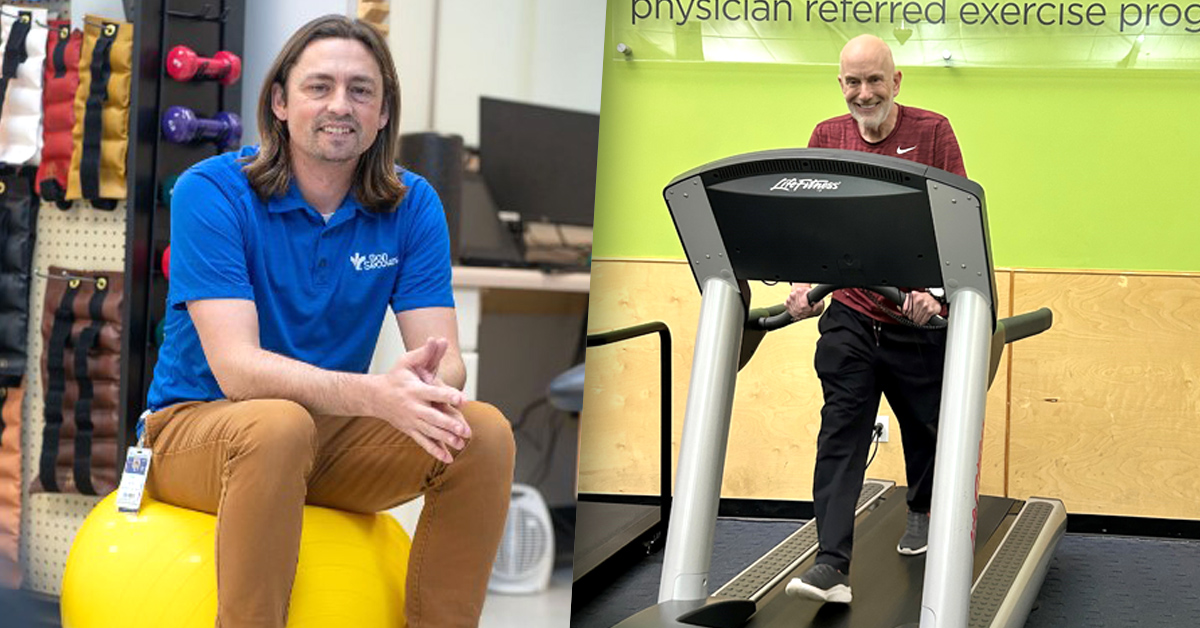Got spring fever? More like spring fractures! After being cooped up during the months of winter cold, we’re all ready to get out and start moving. Unfortunately, that sudden change in activity levels can have negative consequences.
“I see most stress fractures when the weather turns warm, because everyone wants to go out running – they’ve been waiting all winter to go out running,” Michael Sims, MD, a foot and ankle surgeon with Bon Secours Piedmont Orthopedics, says. “It has everything to do with having a low activity lifestyle and ramping up to a high activity lifestyle pretty quickly.”
Stress fractures are tiny breaks or cracks caused by repeated impact on a bone that’s become weak from overuse. This can occur on any weight-bearing bone, but feet are especially vulnerable. So, the best first step in prevention is finding the right footwear.
“The best way to prevent stress fractures is to have a good, sturdy pair of tennis shoes,” Dr. Sims shares. “A thick-soled, rigid shoe is the best one to run in or even for walking. The idea is to evenly disperse the force throughout the foot. Some of these leisure and lifestyle sneakers – you think because they’re cushioned that they help – but they’re too flimsy. They bend too much.”
If the spring weather has you itching to do more outdoor activities, just remember to start slow. Whether you’re starting a new activity for the first time or you’re returning to one that you haven’t done in a while, pacing yourself is key to staying injury-free.
“If you used to be able to run or walk two miles, don’t start at two miles,” Dr. Sims suggests. “Start at half a mile and do that for a week to allow your body to build up strength based on your usage. Your bones will be stronger if you use them more, but they need that acclimation period to build up that strength so they don’t develop stress fractures.”
Listening to your body is also important. It’s natural to experience some soreness after exercising, especially if it follows a hiatus from physical activity. However, pain and swelling – especially for a prolonged period – may be signs that a stress fracture has already developed.
“The number one thing I tell patients is if you start to develop foot soreness or pain after you’re initially starting to walk, don’t try to power through,” Dr. Sims says. “Give it about a week off because if your body is telling you ‘I’m hurting,’ it’s because it’s hurting, and you need to back away. Then try again a week later and do a slower buildup. That may help you avoid a doctor’s visit.”
Rest is one of the best treatment options for a stress fracture as well. Sometimes shoe inserts or a walking boot can also be used to minimize the amount of stress on your foot. Dr. Sims says he prescribes extra vitamin D to his patients, too.
“Vitamin D is something most – if not all – people are somewhat deficient in, especially coming out of winter when we’ve been pent up indoors,” he says. “Vitamin D helps increase the amount of calcium your body absorbs, which helps maintain strong bones.”
So, if you’re looking to enjoy your spring break, rather than experience a spring bone break, make sure to ease into any new exercise routines, increase your vitamin D intake and invest in the right shoes.
Also, visit our website to learn more about the orthopedics and sports medicine services we offer at Bon Secours.





